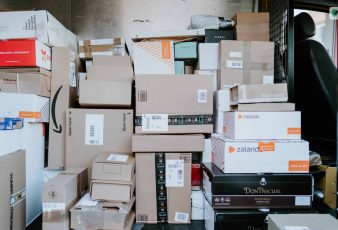So you’ve decided to upgrade from hand stretch wrap to machine stretch wrap, which is definitely a smart move!
Your business will be way more efficient and you’ll save a bundle on film costs and labor. But the main problem in this decision is that you need to choose out of dozens of machine stretch wrap options and figure out the best film for your operation.
This is also very important because if you choose the wrong film, you could face wasted materials, damaged products, frustrated operators, and lost profits.
The good news is that it doesn’t have to be so confusing. In fact, just by understanding a few key differences between the main categories of machine films, you’ll be on your way to picking the perfect stretch wrap for your needs. We are going to break it down nicely and simply here so you can wrap smarter and see big rewards.
Introduction To Machine Stretch Films
So what exactly is machine stretch film? It’s plastic wrap specifically engineered to be applied by an automated machine rather than manually wrapped.
Some of the main benefits of hand stretch film include:
- Faster wrapping speeds
- The ability to wrap heavier and bulkier loads
- Significantly reduced film usage (up to 50% less!)
- Tighter, more secure package containment
- Cost savings on labor, waste, and product damage
Now, within machine stretch films there are a few different varieties to be aware of — each with its own manufacturing processes and performance characteristics:
- Blown stretch film: Produced by extruding heated resin vertically through a circular die. The benefits are good elasticity, puncture resistance, and load-holding power. Best for stable product loads.
- Cast stretch film: Uses a more precise manufacturing method to create very consistent thickness and clarity. Pros are excellent optics, low noise, and high tear resistance. Ideal for retail or promotional pallet loads.
- Pre-stretched film: Put through a special process that pre-stretches it before being rolled and sold. The main perks are lightweight, easier wrapping, higher yields, and less waste. A smart economical choice for many.
- Specialty stretch film: As the name implies, these offer solutions for unique wrapping challenges like weather protection, security, color coding, and more.
So those are the basics of the key machine stretch categories available. Understanding those differences will make it much easier to narrow down your options and pick the optimum film for your stretch-wrapping operations.
Factors To Consider When Selecting Machine Stretch Film
Choosing the right stretch film depends on several key factors specific to your operation. Taking these into account will ensure you get a film that meets your performance, protection, and budget needs.
Load Weight and Transportation Distance
Heavier loads and longer transit distances demand higher gauge films and superior load-holding power. Blown and specialty machine films tend to perform better for stability with heavy or dense products. You’ll also want to use at least a 200-gauge film for loads over 2,500 lbs. For lighter loads traveling shorter regional routes, you can likely get by with a slightly thinner cast or pre-stretched films.
Environmental Conditions
Will your loads sit exposed to high heat, rain, snow, or UV rays? Then you’ll want to consider specialty weather-resistant films. Some offer UV inhibitors, ventilation, or increased flexibility to accommodate exposure and prevent load damage. There are also security films if theft is a concern.
Budget
What’s your spending threshold on stretch film? Pre-stretched machine films yield big material savings thanks to high efficiency and less waste. The cast can also be very economical if extremely clear optics aren’t paramount. Specialty films often come at a higher cost due to the unique manufacturing processes and materials involved.
Performance Priorities
Outside of stability, what other performance factors matter most? Do your wrapped products need optimal visibility, puncture resistance during handling, or quiet and easy wrap application? Evaluate attributes like cling level, transparency, tear strength, noise level, and gauge to align with item fragility and presentation needs.
Optimizing Your Stretch Wrapping Operation
Getting the most out of your stretch wrapping system requires an analytical eye and expert guidance. Follow these tips to maximize efficiency and cost savings.
Conduct An Audit
Take time to thoroughly observe your current stretch wrapping processes. Track key metrics like film usage per pallet wrapped, inefficient application habits, waste due to poor containment or product damage, and operator frustration. Document the data to quantify improvement opportunities and establish performance benchmarks.
Get A Free Consultation With Machine Stretch Film Suppliers
Leverage the expertise of film suppliers who specialize in stretch applications. Ask for an operation audit under real-world conditions. Machine stretch film suppliers can scrutinize your equipment, workflows, and film choices to uncover savings. They may even provide free sample films to test. This outside specialist perspective provides valuable insights you may overlook internally.
Read Also:





























